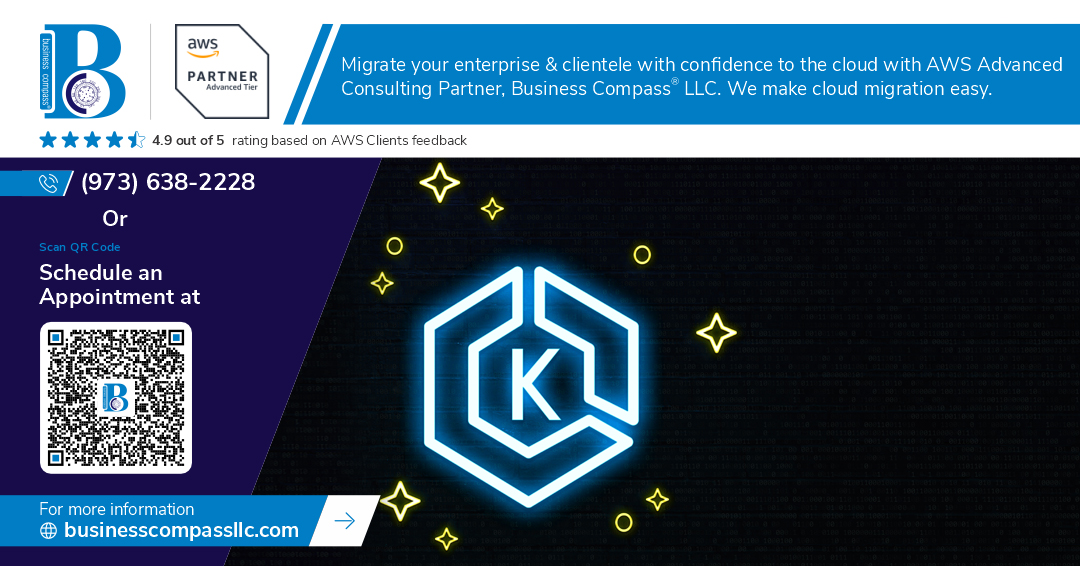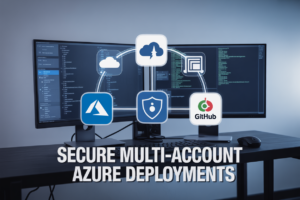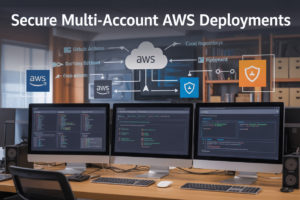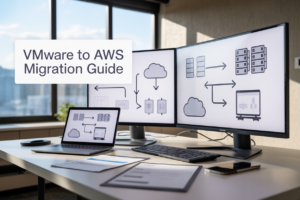Managing AWS EKS clusters efficiently requires smart identity and access patterns that scale with your team’s needs. EKS AssumeRole workflows solve the headache of managing multiple AWS credentials, service accounts, and permission boundaries across development and production environments.
This guide is built for developers who need secure, streamlined access to EKS resources and SREs who want bulletproof identity management without the operational overhead. You’ll get practical solutions that work in real-world scenarios, not just theory.
We’ll start by breaking down AWS EKS AssumeRole workflows and how they fit into your existing architecture. You’ll learn to set up EKS development AssumeRole setup that lets your team move fast without compromising security. Finally, we’ll cover AssumeRole EKS production patterns and EKS AssumeRole troubleshooting techniques that keep your clusters running smoothly when things go sideways.
Skip the trial-and-error phase. Get AssumeRole working right the first time.
Understanding AssumeRole in AWS EKS Architecture
Core IAM AssumeRole mechanics for container workloads
AWS EKS AssumeRole workflows work by enabling pods to temporarily assume IAM roles through the AWS STS service, eliminating the need for hardcoded credentials. When a pod needs AWS access, it presents a JWT token to OIDC identity provider, which validates the request and issues temporary credentials. This EKS AssumeRole integration happens through service accounts that map to specific IAM roles, creating a secure bridge between Kubernetes workloads and AWS services. The process involves three key components: the EKS cluster’s OIDC provider, IAM roles with trust policies, and Kubernetes service accounts with proper annotations that specify which IAM role to assume.
Security benefits over traditional access key management
EKS AssumeRole best practices dramatically improve security posture by replacing static access keys with short-lived, automatically rotating credentials. Traditional access key management requires manual rotation, storage in secrets, and carries risks of exposure through logs or configuration files. AssumeRole AWS EKS integration provides credential isolation per workload, automatic expiration typically within one hour, and fine-grained permissions that can be scoped to specific pods or namespaces. This approach eliminates credential sprawl and reduces the attack surface since compromised credentials expire quickly. AWS EKS AssumeRole configuration also enables audit trails through CloudTrail, providing visibility into which workloads access what resources and when.
Cross-account access patterns for multi-environment setups
Multi-environment AWS EKS AssumeRole workflows enable development, staging, and production clusters to securely access resources across different AWS accounts. Development teams can assume roles in staging accounts for testing, while production workloads access resources in dedicated security or data accounts. This cross-account pattern typically involves creating trust relationships between accounts, where production EKS clusters can assume roles in the data account for database access. EKS AssumeRole troubleshooting often involves verifying trust policies, OIDC thumbprints, and condition statements that restrict access based on cluster identity, namespace, or service account names to prevent unauthorized cross-account access.
Setting Up AssumeRole for EKS Development Workflows
Creating dedicated service roles for development teams
Setting up EKS AssumeRole workflows starts with creating dedicated service roles for your development teams. Create separate IAM roles for each team or project to maintain clear boundaries and accountability. Use descriptive naming conventions like eks-dev-frontend-team-role or eks-staging-backend-role to make role management easier. Configure trust relationships to allow specific users or groups to assume these roles, preventing unauthorized access. Each role should map to specific EKS cluster permissions through AWS IAM roles for service accounts (IRSA) or traditional IAM user mappings.
Implementing least-privilege access policies
Design your AWS EKS AssumeRole policies with least-privilege principles to minimize security risks. Start with minimal permissions and gradually add access based on actual requirements. Create custom IAM policies that grant specific Kubernetes RBAC permissions rather than using overly broad administrative access. Segment permissions by environment – development roles shouldn’t access production resources. Use AWS IAM policy simulator to test permissions before deployment. Consider implementing time-bound access using AWS STS session duration limits to reduce the window of potential misuse.
Configuring kubectl with temporary credentials
Configure kubectl to work seamlessly with temporary AssumeRole credentials for your EKS development AssumeRole setup. Use aws eks update-kubeconfig with the --role-arn parameter to automatically configure your kubeconfig file with the appropriate role. Install and configure aws-iam-authenticator or use the built-in AWS CLI credential provider. Set up credential helpers that automatically refresh tokens before expiration. Create shell aliases or scripts that assume roles and update kubectl context simultaneously. This approach ensures developers always use proper credentials without manual token management.
Automating role assumption in CI/CD pipelines
Integrate AssumeRole workflows into your CI/CD pipelines for seamless EKS deployments. Configure your pipeline tools (Jenkins, GitLab CI, GitHub Actions) with IAM roles instead of long-lived access keys. Use OIDC identity providers to establish trust relationships between your CI/CD platform and AWS. Set up different roles for different pipeline stages – one for testing, another for deployment. Implement automatic role switching based on branch names or deployment targets. Store role ARNs as environment variables and use AWS SDK automatic credential chaining to handle role assumption without hardcoding credentials in your pipeline scripts.
Advanced AssumeRole Patterns for Production Operations
Multi-cluster access management across regions
Production environments often span multiple regions for disaster recovery and compliance. Configure regional AssumeRole patterns using cross-region trust policies that allow seamless switching between EKS clusters. Set up dedicated management roles for each region with specific permissions scoped to regional resources. Use AWS Organizations SCPs to enforce regional boundaries while maintaining operational flexibility. Regional role mapping in aws-auth ConfigMaps ensures consistent access patterns across clusters. Implement region-specific naming conventions for roles like EKSAdmin-us-east-1 and EKSAdmin-eu-west-1 to avoid confusion during incident response.
Emergency break-glass access procedures
Break-glass scenarios require immediate EKS access bypassing normal approval workflows. Create emergency roles with time-limited access using AWS STS session duration policies. Configure these roles with MFA requirements and automatic notifications to security teams when assumed. Use AWS CloudTrail to track emergency access events with detailed logging. Implement automated role deactivation after predefined time windows. Store emergency access procedures in runbooks with clear escalation paths. Emergency roles should have minimal permissions necessary for immediate incident resolution while maintaining security boundaries.
Audit logging and compliance tracking
Comprehensive audit trails for EKS AssumeRole workflows support compliance requirements. Enable AWS CloudTrail logging for all STS AssumeRole events with detailed request context. Configure Amazon CloudWatch to aggregate role assumption patterns and unusual access behaviors. Use AWS Config rules to monitor role configuration changes and policy modifications. Implement custom metrics for tracking role usage frequency and session durations. Export audit logs to Amazon S3 for long-term retention and compliance reporting. Create automated alerts for suspicious AssumeRole patterns using CloudWatch alarms and SNS notifications.
Role chaining for complex organizational structures
Large organizations require sophisticated role hierarchies for EKS access delegation. Implement role chaining where base roles assume specialized EKS roles based on team responsibilities. Configure trust relationships between organizational roles and EKS-specific roles using condition keys. Use AWS IAM path-based organization like /teams/platform/eks-admin for clear role structure. Implement department-level roles that chain to cluster-specific roles for granular access control. Document role inheritance patterns to prevent permission escalation vulnerabilities. Validate role chains regularly to ensure they meet least privilege principles while maintaining operational efficiency.
Session duration optimization for operational efficiency
Optimize AssumeRole session durations based on operational patterns and security requirements. Configure longer sessions for planned maintenance windows and shorter durations for routine operations. Use AWS STS MaxSessionDuration policies to enforce organizational security standards. Implement dynamic session duration based on risk assessment and user authentication strength. Monitor session usage patterns to identify optimal duration settings for different operational scenarios. Configure role session policies to adjust permissions based on session duration. Balance security requirements with operational efficiency by analyzing actual session usage data and adjusting policies accordingly.
Troubleshooting Common AssumeRole Integration Issues
Permission boundary conflicts and resolution strategies
Permission boundaries create invisible barriers that can derail your EKS AssumeRole workflows without warning. When your assumed role gets blocked by boundaries, check the PermissionsBoundary policy attached to the role – it acts as a maximum filter that can override even the most generous inline policies. Debug by examining both the role’s permissions and the boundary policy using aws iam get-role and aws iam get-policy. The most common fix involves either expanding the boundary policy to include required EKS actions like eks:DescribeCluster and sts:AssumeRole, or removing the boundary entirely if it’s not serving a security purpose.
Token expiration handling in long-running processes
Long-running EKS processes face the dreaded token expiration wall, typically hitting the 1-hour default limit for assumed role credentials. Build automatic refresh mechanisms using the AWS SDK’s credential providers, which handle token renewal transparently. For custom implementations, monitor the Expiration field in your credentials and refresh tokens proactively when they’re within 15 minutes of expiring. Kubernetes deployments should use service accounts with IRSA (IAM Roles for Service Accounts) instead of hard-coded credentials, as the kubelet automatically rotates these tokens. Container applications can leverage the AWS SDK’s default credential chain, which automatically refreshes tokens from the instance metadata service or EKS pod identity.
Cross-account trust relationship misconfigurations
Cross-account AssumeRole failures in EKS typically stem from misconfigured trust policies that don’t properly allow the source account or service. The trust relationship must explicitly include the correct principal – either the source account ID (arn:aws:iam::SOURCE-ACCOUNT:root) or specific roles/users. Check for typos in account IDs, missing sts:AssumeRole actions, and overly restrictive conditions like IP address or time-based constraints. EKS-specific trust relationships often need both the EKS service principal and your worker node instance profiles. Use aws sts assume-role from the CLI to test cross-account access before implementing in your EKS AssumeRole workflows, and always verify external ID requirements match between both accounts.
Monitoring and Optimizing AssumeRole Performance
CloudTrail analysis for role usage patterns
AWS CloudTrail provides detailed logs of AssumeRole operations, allowing you to track which roles are assumed, when, and by whom. Analyze the AssumeRole events to identify peak usage times, frequent role switches, and potential bottlenecks in your EKS AssumeRole workflows. Look for patterns like excessive role assumptions that might indicate inefficient credential caching or applications making unnecessary API calls. CloudTrail data helps you understand user behavior and optimize role design accordingly.
Cost optimization through role consolidation
Multiple granular roles can increase AWS costs through API calls and CloudTrail logging fees. Consider consolidating similar roles with overlapping permissions into broader, well-scoped roles that still maintain security boundaries. Review your EKS AssumeRole configuration to eliminate redundant roles and reduce the number of assume operations. This approach decreases both operational complexity and costs while maintaining proper access controls for your development and production environments.
Performance metrics for credential refresh cycles
Monitor credential refresh cycles to prevent authentication failures and performance degradation in your EKS AssumeRole workflows. Track metrics like credential expiration times, refresh success rates, and the duration between assume operations. Set up CloudWatch metrics to measure the time taken for role assumptions and identify any delays that could impact application performance. Optimize refresh intervals based on your workload patterns to balance security with performance requirements.
Alerting on failed assumption attempts
Configure CloudWatch alarms to detect failed AssumeRole attempts, which could indicate security issues or configuration problems. Set up alerts for unusual patterns like repeated failures from specific users or applications, failed assumptions outside business hours, or attempts to assume non-existent roles. Create SNS notifications to inform your DevOps team immediately when EKS AssumeRole operations fail, enabling quick response to potential security incidents or system misconfigurations.
AssumeRole workflows transform how development and operations teams interact with EKS clusters by providing secure, scalable access patterns that eliminate the need for long-lived credentials. By implementing proper role assumption strategies, teams can maintain strict security boundaries while enabling smooth collaboration across different environments and access levels.
The real power comes from combining AssumeRole with monitoring and optimization practices that keep your EKS operations running smoothly. Start by setting up basic role assumption for your development workflows, then gradually introduce advanced patterns as your team grows more comfortable with the approach. Your future self will thank you for taking the time to get this foundation right from the beginning.




















